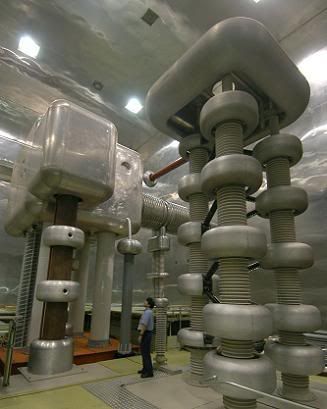Post by glactus on Mar 31, 2008 3:06:31 GMT

The KEK particle accelerator in Japan
In the first few moments of the Universe, enormous amounts of both matter and antimatter were created, and then moments later combined and annihilated generating the energy that drove the expansion of the Universe.
But for some reason, there was an infinitesimal amount more matter than antimatter. Everything that we see today was that tiny fraction of matter that remained.
But why? Why was there more matter than antimatter right after the Big Bang? Researchers from the University of Melbourne think they might have an insight.
"Our universe is made up almost completely of matter. While we’re entirely used to this idea, this does not agree with our ideas of how mass and energy interact. According to these theories there should not be enough mass to enable the formation of stars and hence life."
Researchers have been using the KEK particle accelerator in Japan to create special particles called B-mesons. And it's these particles which might provide the answer.
A B-meson is a particularly heavy particle, with more than 5 times the mass of a proton, due almost entirely to the mass of the B-quark. And it's these B-mesons which require the most powerful particle accelerators to generate them.
In the first few moments of the Universe, the anti-B-mesons might have decayed differently than their regular matter counterparts. By the time all the annihilations were complete, there was still enough matter left over to give us all the stars, planets and galaxies we see today.

NGC 4258
credits:
Original Source: University of Melbourne News Release Filed under Cosmology, Physics
This is part text only. See image, full text and all scientists involved at universetoday.com
www.universetoday.com/2008/03/28/why-theres-more-matter-than-antimatter-in-the-universe/#more-13377
article credit: Fraser Cain


